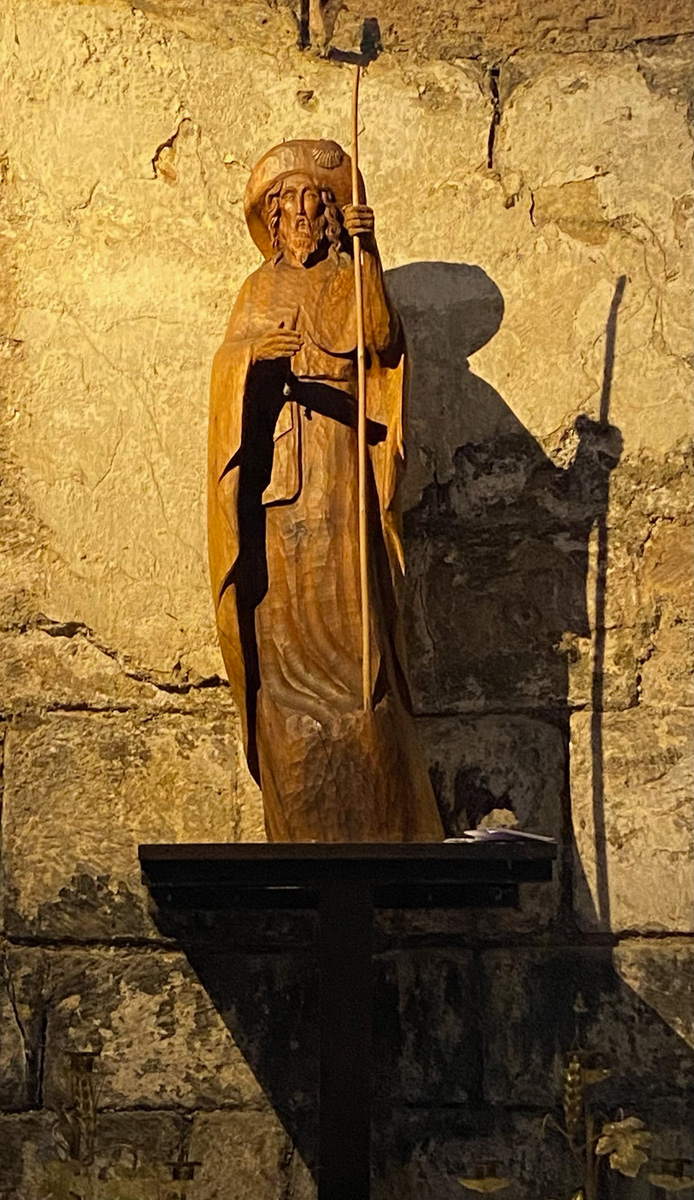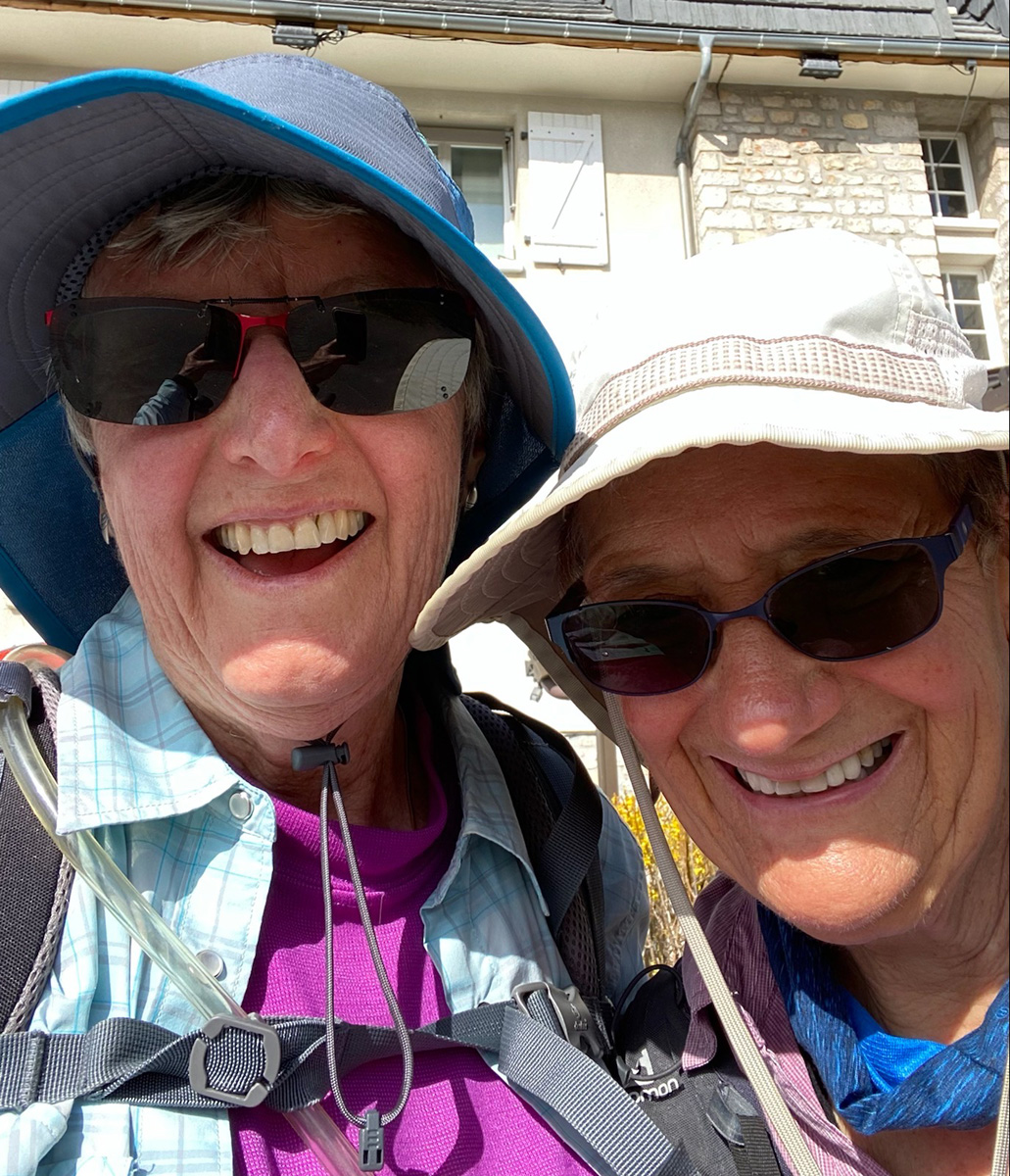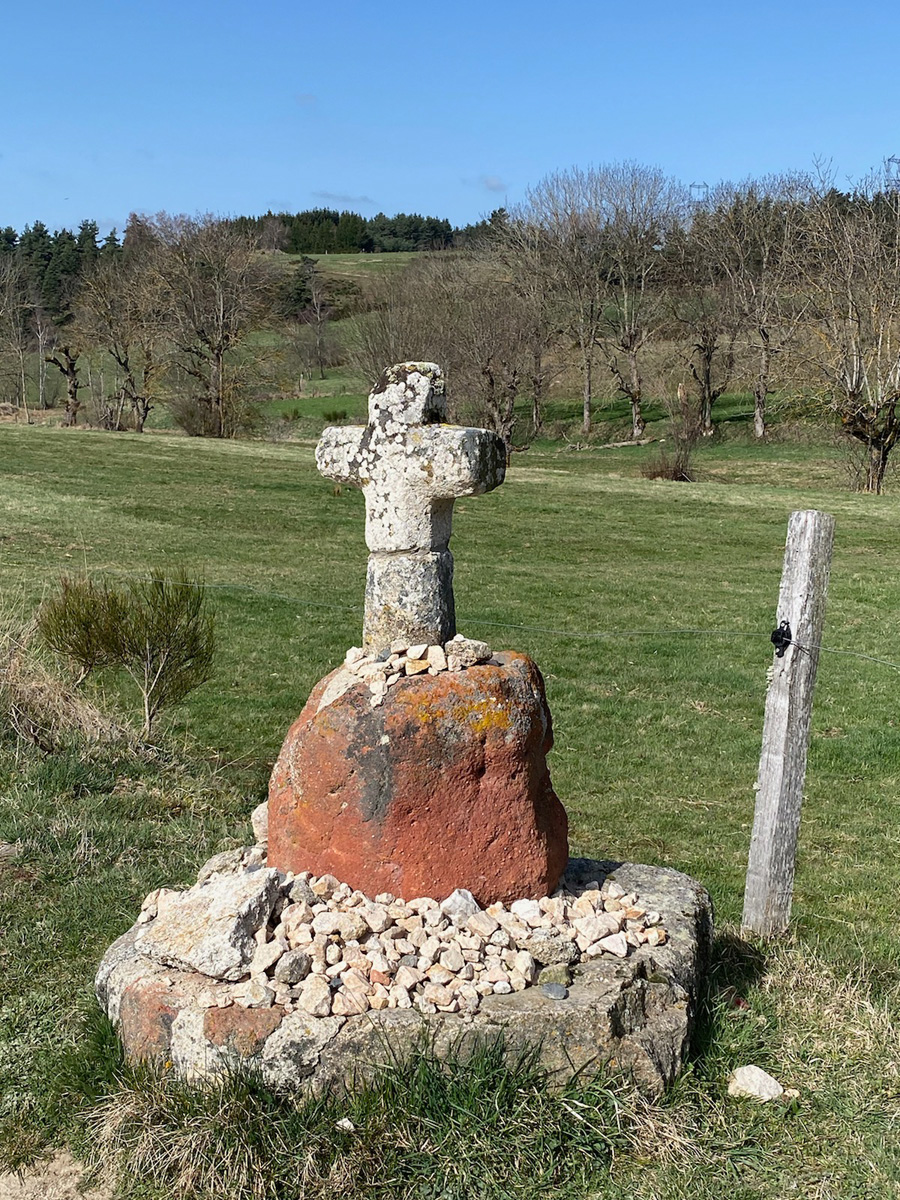



The Camino de Santiago has been walked by pilgrims for over 1,000 years. The destination point is Santiago de Compostela, in Galicia, Spain, where the relics of St. James the Greater, the brother of John the Apostle, and also one of the Apostles of Jesus, are buried beneath the main altar of the cathedral. To walk the entire distance (depending on where one starts) takes seven weeks or more, but many return again and again to walk a portion of the route. In centuries past, people left from their homes in various parts of Europe, and that’s where their paths began. Today, there are several main routes, called GRs—Grand Rondonnées, that are known and mapped, and pilgrims are supported by places to eat and sleep.
Rachael Sanborn, who was raised in local El Rito, heads a tour company called Red Monkey Travel that offers a few supported walks per year on the pilgrim’s path. When her mom, Janie Corrine—my frequent walking buddy—mentioned that she was interested in walking on the Camino this year and asked if I would also like to consider it, I immediately said yes! I thought it would be great to do a meditative walk (How hard could that be, right?), especially if it included walking in the south of France on the Chemin de St. Jacques-de-Compostelle (The Way of St. James). So, I signed up for a section of the walk reputed to be an interesting and varied part of the Camino—from Le Puy-en-Velay to Conques. Well! Then I found out the length of the daily treks (on average, over 11 miles per day) and the first lesson of the Camino began.
For me, it was about fear!
What is a pilgrimage? Wikipedia defines it as “a journey, often into an unknown or foreign place, where a person goes in search of new or expanded meaning about their self, others, nature, or a higher good, through the experience. It can lead to a personal transformation, after which the pilgrim returns to their daily life.” This was indeed the attitude we assumed as we left on our adventure.
This is traditionally a Catholic path, a path of devotion, and there are beautiful crosses, crucifixes, chapels, churches, and cathedrals open and well-maintained along the way. There is a sense of purpose in the walking and openness to what wants to be learned and integrated by the pilgrim that comes from the depth of human nature, no matter the spiritual practice.
Rachael helps pilgrims focus with a morning circle of centering, sharing intention, meaningful poems, and a final “Buen Camino!” to start the well-spaced, personal-paced daily walk. Relationship to self and nature accompany one throughout the day.
A rich pleasure on the trip is meeting other pilgrims along the same path, often staying in the same village, often sharing a dinner table in an abbey, government facility, or a chambre d’hôte (modest hotel). There is a sense of comradery, heartfulness, and openness that pervades the journey.
What became evident was that the Camino gives the pilgrim what is needed for his/her stage of life. Many are walking at retirement to reflect back and look ahead, many for an age marker, many for a life crisis, grief, or (like me) a test and conversation with the body. Time is given for answers and insights.
The trip was so worthwhile—beautiful landscapes, wildflowers, pasture animals, and fellow travelers. The challenges of 11 days of walking were met, fears faced, and I felt tremendous gratitude for all who made it possible. The benefits of time away from one’s normal routine and daily tasks are great, and this can even be done on pilgrimage paths in our own country (although the system of support isn’t as well-developed as it is for the Camino)!
One of the major take-aways for me is realizing that my path and my fellow travelers are right here in northern New Mexico! May you also have the opportunity to walk in nature to explore your inner landscape. Buen Camino!

